Vitis Development Flow¶
In this section we will cover the development flow for users who wants to create their own application to run on Alveo.
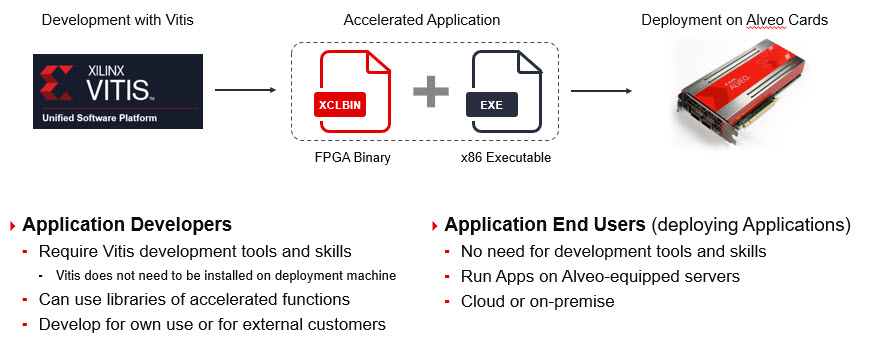
Downloading Software¶
As far as the required software goes, for deployment use you need to install: XRT, XRM and deployment shell, as you have done in the previous sections. For development use, you need to install Vitis software and development shell in addition to those. You can find all these from Alveo U50 web page.
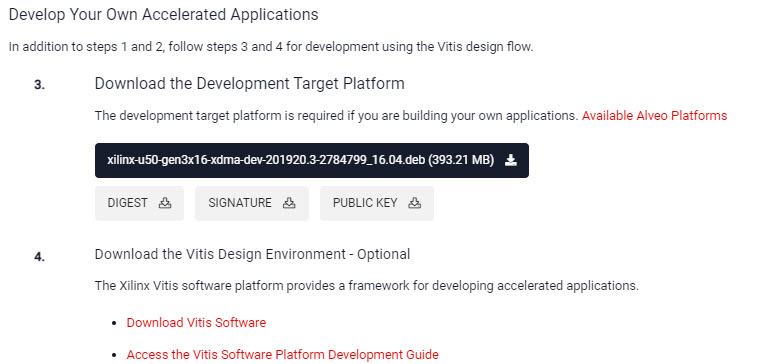
Programming Model¶
There are two parts in creating applications for Alveo. One involves programming the host application, which runs on x86 processor; and the second one is the FPGA application, which is the function we want to accelerate. The programming model is quite different between the two.
Developing host applications is similar to any software development. You use C/C++ but the unique part is that you use OpenCL API, to perform all the tasks necessary to utilize functions running on FPGA, such as scheduling tasks to run in FPGA, moving data between host and FPGA, and programming FPGA, etc. You use gcc/g++ tools to develope and produce executables.
In this programming model, being able to program FPGA on the fly is a big advantage. As you complete certain tasks where youno longer need them, you can swap the content of of the FPGA to a different task;thus, economizing the FPGA resources by not having to store all the tasks/compute units in the FPGA all the time.
Developing application for FPGA can be a daunting task. Design entry is done typically using Verilog or VHDL - commonly referred to as RTL (register transfer language) which is a low level description language. In Vitis design environment, users can use C/C++/OpenCL C to describe and design functions, which we call kernels;then, High Level Synthesis (HLS or vitis_hls) tool transforms this high level abstraction code to RTL. This is what enables software developer to utilize FPGA for acceleration without knowing FPGA implementation techniques.
Once the kernel is in RTL, the rest of the process - all the way to programming the FPGA, is done autonomously in Vitis development environment. During this process RTL code is synthesized - mapped to FPGA resources and wired properly, then bitstream containing these programming information is created into a container file called xclbin.
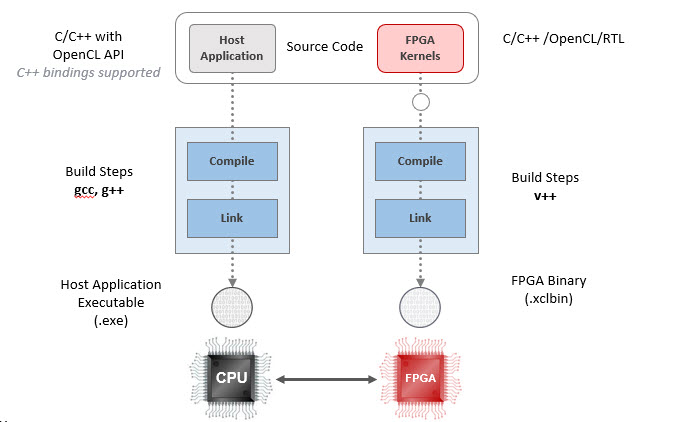
One caveat to be aware is that FPGA implementation task can take a long time - multiple hours. So before you commit to FPGA implementation task, you want to make sure your design is functionally correct and the performance estimate meets the requirements. CPU emulation, HW emulation and reports from HLS tools in Vitis environment can help you do that without having to complete the implementation.
In many use cases, a user will have access to the kernel library and the xclbin is provided, then his job would be simply to develop SW application utilizing those FPGA accelerator functions available in xclbin and does not have to deal with FPGA implementation tasks. In this case it becomes a pure SW application development flow, where user simply calls those functions thru API in his host codes.
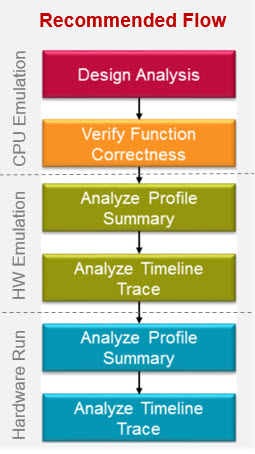
Optimizing for Performance¶
The basic concepts of parallel programming applies to programming Alveo to get the optimum performance, such as:
Distribution of workload: how to best distribute the workload over the available processing elements (we call them compute units - CU, or kernel), similar to ND partitioning in OpenCL paradigm. Some algorithms works out better in this regard than others. For cosine similarity computation, we can easily distribute the workload over the available compute units.
What hits the fan first: identifying what is the limiting factor as we try to increase the performance. Is it data bandwidth or computation resources?
Data movement: how does the data flow among PCIe, DDR/FPGA, network interface, FPGA to FPGA (in multiple FPGA case) and where is the bottleneck?
Kernel optimization: Once we figure out how data gets to the kernel, we need the best kernel performance possible. This is where HLS tools (vitis_hls) comes in. You can “guide” HLS by applying/embedding pragmas in the source codes (C, C++ or OpenCL C). You can iterate - apply pragmas, synthesize, check out the performance, where each iteration can be done fairly quickly, until you reach the performance goal.
Next Step¶
There are several resources to help you get started with creating your own accelerator functions.
Vitis Tutorial This covers overview/introduction of Vitis development flow, build/run designs and analyze results.
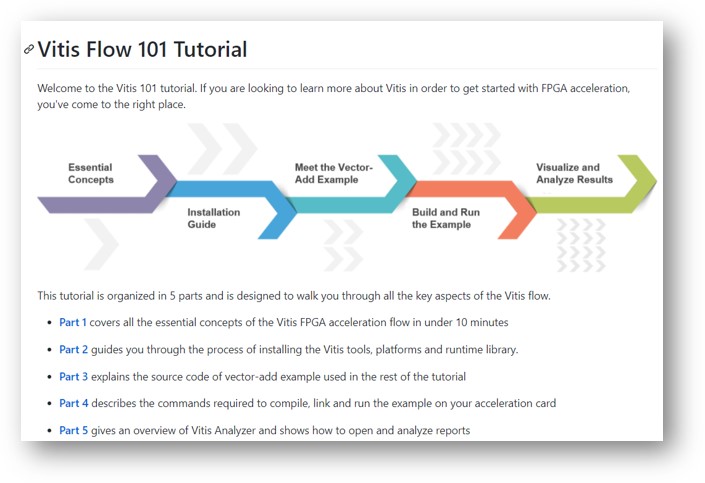
Examples Some times you just want to see an example that works rather than reading thru one document after another. Using such an example, you can understand the concept and use that to start your own design. You will see many bite-sized examples on optimization techniques for HLS and Vitis here.
Vitis Library You have seen this already. This has several domain specific libraries of functions that you can use to compile/build your own applications
